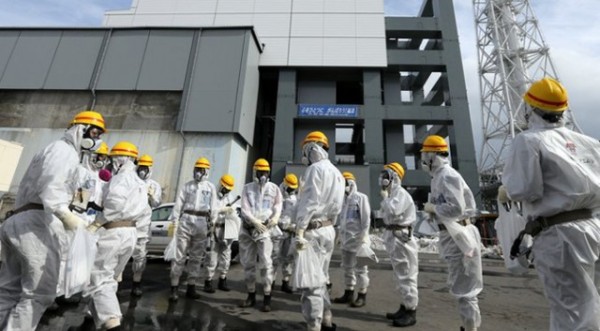Muon scans confirm complete reactor meltdown at Fukushima Reactor #1
It has long been known that three of the reactor cores at the Fukushima Dai-ichi nuclear station suffered meltdowns. In Units 1, 2 and 3, the nuclear fuel inside the reactor core – made mostly of uranium and plutonium oxides, and the fuel cladding, made of zirconium metal – over-heated and melted at a temperature of 5000 degrees F (2800 degrees C).
The resulting mass of molten core material is called “corium”. The question in many people’s minds has been, how far did this molten material go? Did it collect and resolidify at the bottom of the reactor vessel? Or did it melt right through the reactor vessel and resolidify at the bottom of the containment vessel? Or did it melt even further, perhaps right through the floor of the reactor building into the ground below – as the core of the Chernobyl reactor did in 1986?
Muon tomography is a technique developed in 2003 for obtaining a three-dimensional image of the internal distribution of very heavy elements (like uranium and plutonium) inside several thick-walled and otherwise impenetrable containers. This technique is well-suited to get a picture of where the fuel in a melted-down nuclear reactor might have gone after a major meltdown accident like the Fukushima disaster.
Muon tomography is a slow process requiring months of effort, harnessing the energetic muons that are produced when cosmic radiation from outer space collides with air molecules in the Earth’s atmosphere, and directing those muons through the core of the reactor, painstakingly building up a picture, in sections, of where the fuel is. Muons are much more penetrating than x-rays, and they are particularly good at picking out the heaviest elements while ignoring the lighter elements found (for example) in the walls of the containment structures.
Well the results are in for Unit 1, and the answer is – there is no fuel in the core at all. The reactor vessel is devoid of fuel. It has all melted or dripped through the bottom of the reactor vessel, and it is still unknown where it has all gone to. We are talking about 150 tonnes of very heavy, intensely radioactive material, that has melted like candle wax and simply dripped away…. Time will tell whether the same is true for Units 2 and 3.
At Chernobyl, where the core of the reactor melted right down into the ground almost 30 years ago, hundreds of workers are currently building the largest mobile structure ever constructed – an enormous high-tech shell that will slide on concrete rails to fit snugly over the badly damaged reactor building and its crumbling sarcophagus. Despite four years of effort, construction of the shell is not yet complete. It was expected to be finished and fitted over the Chernobyl reactor in the summer of 2015, but apparently, according to World Energy News, that target date has now been pushed forward to the end of 2017. Part of the problem is lack of funds – another 100 million euros must be raised to cover the 1.5 billion euro cost of the structure itself, with another 800 million euros needed for the final fitting.
The enormous and highly sophisticated steel structure is called the “New Safe Confinement”. It stands 110m high, and it is 250m wide and 150m long, weighing in at 30,000 tonnes. It is currently being assembled 600 metres away from the damaged reactor. This allows the workers to work for 40 hours a week without exceeding the radiation exposure limits for atomic workers.
It is called a “Confinement” structure rather than a “Containment” structure because it is not designed to hold in hot pressurized gases as reactor containments are required to do, but simply to confine radioactive solids and dusts and vapours that may be stirred up during an inadvertent collapse of the existing sarcophagus or of the damaged reactor building itself, or by the radioactive demolition work that will be taking place inside the New Safe Confinement structure – if Ukraine can find the funds to do it!
For more on the complete meltdown at Fukushima Unit 1, see http://tinyurl.com/l6l3pxa (Extreme Tech)
For more on the New Safe Containment at Chernobyl, see
http://tinyurl.com/kdel675 (World Nuclear news)










